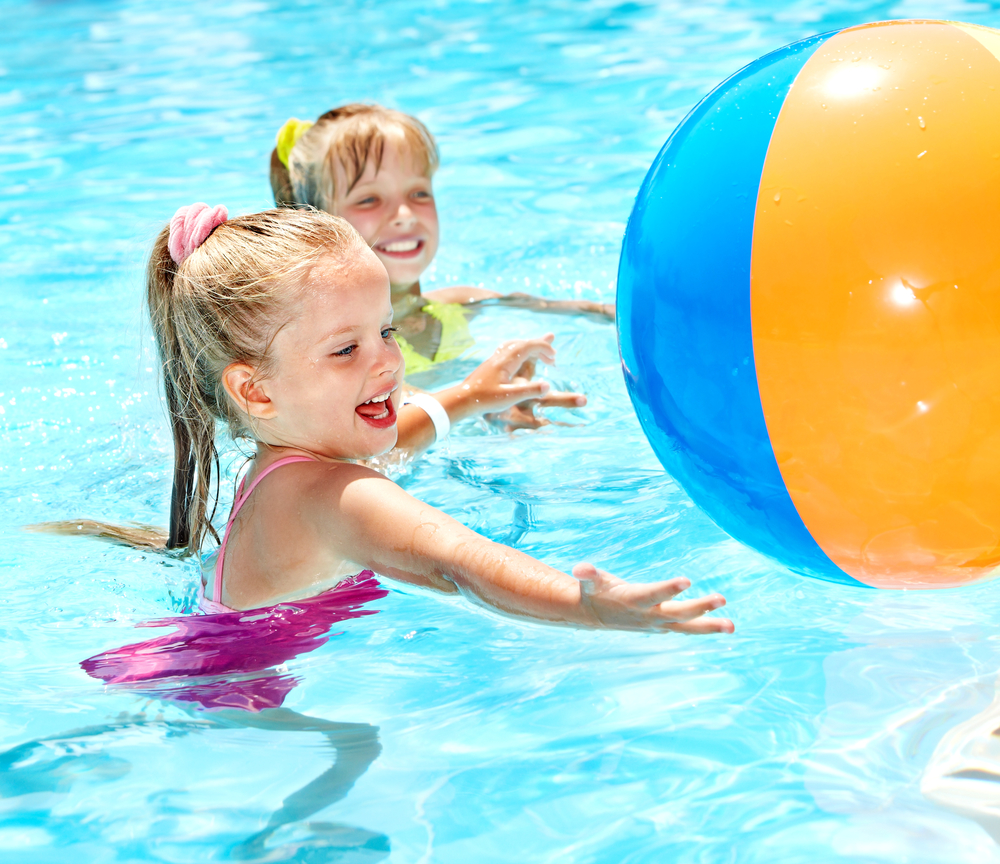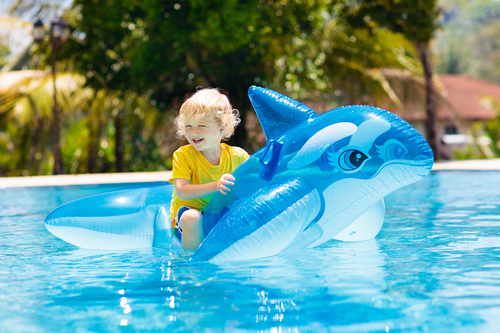Is It Time To Teach Your Child To Swim?
 Even if you decide to sign your child up for swim lessons here are a few steps you can take to teach your child to swim in the comfort of your own family swimming pool.
Even if you decide to sign your child up for swim lessons here are a few steps you can take to teach your child to swim in the comfort of your own family swimming pool.
- Everything you do in the swimming pool has to be fun and with the idea front-of-mind that you never want your child to feel fear. Remember we are no longer in the “sink or swim” days when our parents and grandparents say they were simply tossed into a body of water and they learned to sink or swim. That, obviously, caused many people to be fearful of the water and to this day they avoid it. What you want to do is to show your child that being in the swimming pool is just as much fun as being in the bathtub! (this is assuming that your child loves the tub!)
- Hold tight to your child when you’re in the water so he or she doesn’t feel like it will be easy to slip out of your arms. Talk in a soothing voice about how much fun it will be. Never force your child to “go it alone.” Your child may also feel more comfortable in the water at first with a life vest on — let that happen as a way to make the time in the pool fun.
If your child is afraid of the size of the family swimming pool, start her out spending time in a plastic kiddie wading pool until she is ready to move onto the big pool.
- Swimming shouldn’t be a “lesson.” Swimming should be a fun time, not something your child dreads — like a piano lesson! Don’t make swimming be a lesson or a chore. The time you spend in the pool with your child should be something you both look forward to. If either of you are grouchy, then go swimming at a different time when you’re both looking forward to it. Rather than saying, “time for a swim lesson” say “hey, let’s go have fun together in the pool!” Your words and your tone set the tone for your time together. ”
If your child thinks being in the water is fun and games he will always be ready to spend time there with you.
- Teaching him to swim can progress from letting him kick his feet in the water and splashing you for fun. He can move up to letting you carry him in the water and maybe bouncing up and down to make splashes. Make certain he is wearing a life vest because you know how slippery a wet child can be! Again, if you’re working with a swim instructor they will let you know the first steps, then the next steps and everything that builds upon the step before.
 Teach him to blow bubbles in the water. Make it all a game and teaching your child to swim will be much easier.
Teach him to blow bubbles in the water. Make it all a game and teaching your child to swim will be much easier.
- Life vests are a must. Water wings are not a safety device. Your child should wear a life vest that is properly sized for his age and weight. Many life vests for babies and children have a strap that goes between their legs to keep the vest on. If your child is accustomed to wearing the life vest every time he goes into the pool he will come to expect that it is part of the fun experience. If the child is old enough, let him or her pick out their own life vest as there are many colors and designs from which to choose and it will be even more fun if they are part of the process.
Teach your child to hold his breath. This is one of the biggest lessons to teach your child.
Here are some steps you can take to get your child swim time ready.
- Show him how to blow bubbles into the water. This is a fun game for both of you. Show him how to make a “motorcycle” sound with his mouth and blow bubbles. You can do this in the bathtub even before you step into the pool.
- Blow into your child’s face. When you do this, he will gasp and hold his breath. If your child isn’t afraid of the water and is old enough to understand instructions, tell her to hold her breath then dip her slowly underwater. Tell her what you’re going to do and go underwater with her.
- Show your child how to hold his nose, close his mouth and go underwater. It’s easiest for your child to learn to not need to hold his nose, but that might help you to teach him to swim and go underwater if holding his breath isn’t working right now.
Your swimming instructor will help you understand when your child is ready to move up to the next level in the pool. That “next level” could be jumping from the side of the pool into your arms. Catch her and don’t let her go underwater. After she is comfortable jumping and being caught, ask her if she wants to go underwater, knowing that you are right there with her in your arms.
Showing a child how to swim is like training a puppy. The lessons need to be brief and fun. Once your child is bored or frustrated you want to get out of the pool. Don’t think you’re going to set a timer and say, “we’re going to be in the pool for thirty minutes” maybe some days you will, but others it may take you longer to get in and out of your swimsuit than the time spent together in the pool lasts. Forcing your child to stay in will only make swimming seem like a chore and something to avoid.

